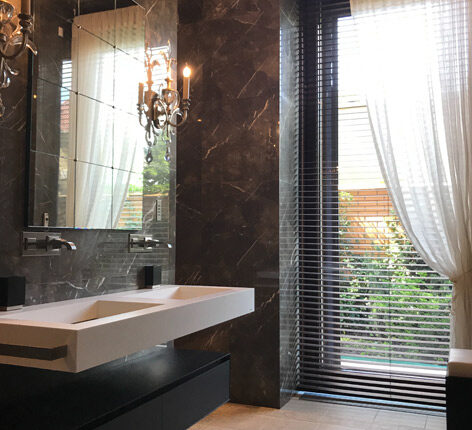
- jerin
- /
Painting plays a crucial role in the maintenance, aesthetics, and longevity of buildings, whether residential or commercial. While it may seem like a simple cosmetic improvement, the necessity of painting goes far beyond just enhancing a building’s appearance. Here’s a comprehensive overview of why painting is required for buildings:
1. Protection Against the Elements: Perhaps the most critical reason for painting buildings is the protection it provides against the harsh elements of nature. Exterior paint acts as a shield, preventing moisture, UV rays, wind, and pollutants from infiltrating the building’s surfaces. Without this protective layer, buildings are susceptible to damage, including rot, mold, and structural deterioration.
2. Preservation of Structural Integrity: Painting helps to preserve the structural integrity of a building. For wooden structures, paint acts as a barrier against moisture, preventing the wood from swelling, warping, or rotting. In the case of metal surfaces, paint prevents rust and corrosion, which can weaken the structure over time.
3. Aesthetic Enhancement: Painting is perhaps the most noticeable way to improve a building’s aesthetics. A fresh coat of paint can transform the appearance of a property, making it look well-maintained and inviting. The right color scheme and finish can also reflect the building’s purpose and style, whether it’s a residential home or a commercial establishment.
4. Increased Property Value: The curb appeal of a property significantly affects its value. Well-painted buildings tend to command higher prices in the real estate market. Potential buyers or tenants are more likely to be attracted to properties that appear clean, fresh, and well-cared-for.
5. Prevention of Damage and Decay: Regular painting helps identify and address issues like cracks, gaps, or wood rot early on. By addressing these problems promptly, you can prevent them from escalating into more extensive and costly repairs.
6. Energy Efficiency: Paint can also contribute to energy efficiency. Reflective or light-colored paints on roofs and exterior walls can reduce heat absorption, leading to lower cooling costs during hot weather. This is particularly important in regions with extreme climates.
7. Compliance with Regulations: Many building codes and regulations require regular maintenance and painting to ensure the safety and durability of structures. Compliance with these rules is essential to avoid legal issues and maintain the building’s safety.
8. Personalization: Painting allows property owners to personalize their space. Whether you want to create a specific mood, match your brand’s colors, or express your individual style, paint offers endless possibilities for customization.
9. Improved Indoor Air Quality: Painting the interior of a building with low-VOC (volatile organic compounds) or zero-VOC paints can improve indoor air quality. These paints emit fewer harmful chemicals, making the indoor environment healthier for occupants.
10. Longevity: Properly maintained paint can extend the life of building materials. Regular repainting prevents the deterioration of surfaces and reduces the frequency of more extensive renovations or replacements.
In conclusion, painting is not merely a cosmetic choice; it is a fundamental requirement for the protection, preservation, and enhancement of buildings. Whether for residential homes, commercial properties, or industrial structures, painting plays a vital role in maintaining the integrity and value of real estate assets. Regular painting is a wise investment that ensures a building remains functional, aesthetically pleasing, and structurally sound for years to come.


Hi, this is a comment.
To get started with moderating, editing, and deleting comments, please visit the Comments screen in the dashboard.
Commenter avatars come from Gravatar.